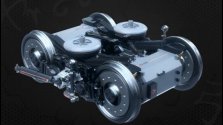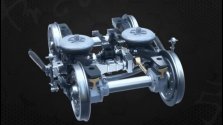Yes, many timesWas this posted already? The potential of autonomous drone technology can be chilling.
You are using an out of date browser. It may not display this or other websites correctly.
You should upgrade or use an alternative browser.
You should upgrade or use an alternative browser.
News on China's scientific and technological development.
- Thread starter Quickie
- Start date
What are biosyncretic robots? The paper's lead author, Zhang Chuang, once explained it in as "consisting of both living biological materials and non-living systems possess desirable attributes such as high energy efficiency, intrinsic safety, high sensitivity, and self-repairing capabilities."
Paper in English:
News report in Chinese:
大自然为机器人的发展提供了巨大支持。近日,中国科学院沈阳自动化研究所类生命机器人研究团队以蝠鲼为设计灵感,研发了一种由体外培养的骨骼肌组织驱动、环形分布多电极(CDME)控制的类生命游动机器人,这个机器人仅由一块肌肉组织驱动就可实现有效推进。
仿生学是重要的机器人研究方法之一,通过模仿自然生物的结构和行为来提高机器人的运动学性能。而类生命机器人以天然生物材料为机器人核心要素,是仿生学的进一步发展。例如,一些活体细胞已经被用于实现机器人的部分功能,包括感知、控制、驱动等,其中驱动作为决定其性能的关键因素,关系到机器人的整体性能。然而要进一步发展类生命机器人的可控运动性能,还需要创新推进方式和控制方法。针对以上难题,研究人员提出了一种基于CDME的动态控制方法。该项研究以论文《基于动态电刺激的“仿蝠鲼类生命机器人”》(A Manta Ray-Inspired Biosyncretic Robot with Stable Controllability by Dynamic Electric Stimulation)发表在期刊《类生命系统》(Cyborg and Bionic Systems)上。
研究团队发现,CDME产生的电场对培养基和细胞的伤害要比传统平行板电极要小,并且使用该方法可动态控制所产生的电场方向,使其与机器人的驱动组织保持实时平行,进而保证机器人的稳定可控性。
在材料与结构方面,研究团队根据蝠鲼的结构设计了机器人的本体骨架,并选用聚二甲基硅氧烷(PDMS)作为结构的主要材料。为了方便将驱动组织和机器人骨架结构进行装配,研究人员选择了以成肌细胞为核心所制造的环形组织作为机器人的驱动部分。
为获得具有有效收缩力的环形肌肉组织,研究人员利用CDME的旋转电刺激实现成肌细胞向可收缩肌管的均匀诱导分化。此外,为控制机器人以理想速度游动,他们还在装配机器人之前测量了在不同电刺激下肌肉组织的收缩力。
在验证机器人的稳定可控性方面,为控制类生命机器人以理想的速度游动,研究团队利用仿真方法分析了机器人的运动性能与驱动组织收缩力之间的关系。
为了展示所提出的类生命机器人的稳定可控运动,研究人员采用所提出的动态电刺激方法实现了机器人以不同速度进行可控游动。
在实验中,机器人展示了有效的游动和稳定的可控性,验证了研究团队提出的仿生设计和基于CDME控制方法的有效性。
论文指出,该项研究所提出的仿生设计与驱动控制方法不但可以促进类生命机器人的进一步发展,而且对软体机器人的仿生设计、肌肉组织工程等相关领域也有一定的潜在指导意义。
不过,现阶段的类生命机器人虽然已实现了有效的可控运动,但仍有许多关键的瓶颈需要被突破。例如,所制造的机器人尺寸大多为厘米级,难以应用于体内药物运输等场景。因此,面向微纳生物结构的3D打印、柔性操作等技术是开发应用于临床等特殊环境的类生命微型机器人的关键。此外,现有的类生命机器人大多依靠外部人工刺激实现可控运动,缺乏自主性。因此,基于活体细胞的感知与控制方法可应用于类生命机器人研究,进而实现基于环境信息感知的机器人自主运动。
据悉,《类生命系统》是北京理工大学与美国科学促进会(AAAS)/Science 共同打造的高水平国际英文科技期刊,入选“中国科技期刊卓越行动计划高起点新刊”项目。
该论文作者张闯是中科院沈阳自动化研究所副研究员,一直专注于机电系统与生命系统交叉融合研究。主持NSFC青年科学基金项目、中国博士后科学基金面上项目、中科院基础培育基金项目、中科院特别研究助理资助项目、辽宁省博士启动基金等;获得中科院院长特别奖,研究成果入选中国智能制造十大科技进展、中国机器人行业年会“科学引领奖”等。
Paper in English:
A Manta Ray-Inspired Biosyncretic Robot with Stable Controllability by Dynamic Electric Stimulation
Abstract
Biosyncretic robots, which are new nature-based robots in addition to bionic robots, that utilize biological materials to realize their core function, have been supposed to further promote the progress in robotics. Actuation as the main operation mechanism relates to the robotic overall performance. Therefore, biosyncretic robots actuated by living biological actuators have attracted increasing attention. However, innovative propelling modes and control methods are still necessary for the further development of controllable motion performance of biosyncretic robots. In this work, a muscle tissue-based biosyncretic swimmer with a manta ray-inspired propelling mode has been developed. What is more, to improve the stable controllability of the biosyncretic swimmer, a dynamic control method based on circularly distributed multiple electrodes (CDME) has been proposed. In this method, the direction of the electric field generated by the CDME could be real-time controlled to be parallel with the actuation tissue of the dynamic swimmer. Therefore, the instability of the tissue actuation induced by the dynamic included angle between the tissue axis and electric field direction could be eliminated. Finally, the biosyncretic robot has demonstrated stable, controllable, and effective swimming, by adjusting the electric stimulation pulse direction, amplitude, and frequency. This work may be beneficial for not only the development of biosyncretic robots but also other related studies including bionic design of soft robots and muscle tissue engineering.News report in Chinese:
中科院沈阳自动化所团队成功研发“仿蝠鲼类生命机器人”
在浩瀚无边的海洋世界里,有一种鱼拥有巨大的“羽翼”,像自带光环的礼服侠,它就是蝠鲼,也被称为“魔鬼鱼”。作为自然界最高效的游泳者之一,蝠鲼几乎能毫不费力地在水中滑翔,甚至在湍急水流中也能敏捷地来回游动。大自然为机器人的发展提供了巨大支持。近日,中国科学院沈阳自动化研究所类生命机器人研究团队以蝠鲼为设计灵感,研发了一种由体外培养的骨骼肌组织驱动、环形分布多电极(CDME)控制的类生命游动机器人,这个机器人仅由一块肌肉组织驱动就可实现有效推进。
仿生学是重要的机器人研究方法之一,通过模仿自然生物的结构和行为来提高机器人的运动学性能。而类生命机器人以天然生物材料为机器人核心要素,是仿生学的进一步发展。例如,一些活体细胞已经被用于实现机器人的部分功能,包括感知、控制、驱动等,其中驱动作为决定其性能的关键因素,关系到机器人的整体性能。然而要进一步发展类生命机器人的可控运动性能,还需要创新推进方式和控制方法。针对以上难题,研究人员提出了一种基于CDME的动态控制方法。该项研究以论文《基于动态电刺激的“仿蝠鲼类生命机器人”》(A Manta Ray-Inspired Biosyncretic Robot with Stable Controllability by Dynamic Electric Stimulation)发表在期刊《类生命系统》(Cyborg and Bionic Systems)上。
研究团队发现,CDME产生的电场对培养基和细胞的伤害要比传统平行板电极要小,并且使用该方法可动态控制所产生的电场方向,使其与机器人的驱动组织保持实时平行,进而保证机器人的稳定可控性。
在材料与结构方面,研究团队根据蝠鲼的结构设计了机器人的本体骨架,并选用聚二甲基硅氧烷(PDMS)作为结构的主要材料。为了方便将驱动组织和机器人骨架结构进行装配,研究人员选择了以成肌细胞为核心所制造的环形组织作为机器人的驱动部分。
为获得具有有效收缩力的环形肌肉组织,研究人员利用CDME的旋转电刺激实现成肌细胞向可收缩肌管的均匀诱导分化。此外,为控制机器人以理想速度游动,他们还在装配机器人之前测量了在不同电刺激下肌肉组织的收缩力。
在验证机器人的稳定可控性方面,为控制类生命机器人以理想的速度游动,研究团队利用仿真方法分析了机器人的运动性能与驱动组织收缩力之间的关系。
为了展示所提出的类生命机器人的稳定可控运动,研究人员采用所提出的动态电刺激方法实现了机器人以不同速度进行可控游动。
在实验中,机器人展示了有效的游动和稳定的可控性,验证了研究团队提出的仿生设计和基于CDME控制方法的有效性。
论文指出,该项研究所提出的仿生设计与驱动控制方法不但可以促进类生命机器人的进一步发展,而且对软体机器人的仿生设计、肌肉组织工程等相关领域也有一定的潜在指导意义。
不过,现阶段的类生命机器人虽然已实现了有效的可控运动,但仍有许多关键的瓶颈需要被突破。例如,所制造的机器人尺寸大多为厘米级,难以应用于体内药物运输等场景。因此,面向微纳生物结构的3D打印、柔性操作等技术是开发应用于临床等特殊环境的类生命微型机器人的关键。此外,现有的类生命机器人大多依靠外部人工刺激实现可控运动,缺乏自主性。因此,基于活体细胞的感知与控制方法可应用于类生命机器人研究,进而实现基于环境信息感知的机器人自主运动。
据悉,《类生命系统》是北京理工大学与美国科学促进会(AAAS)/Science 共同打造的高水平国际英文科技期刊,入选“中国科技期刊卓越行动计划高起点新刊”项目。
该论文作者张闯是中科院沈阳自动化研究所副研究员,一直专注于机电系统与生命系统交叉融合研究。主持NSFC青年科学基金项目、中国博士后科学基金面上项目、中科院基础培育基金项目、中科院特别研究助理资助项目、辽宁省博士启动基金等;获得中科院院长特别奖,研究成果入选中国智能制造十大科技进展、中国机器人行业年会“科学引领奖”等。
Great video by CRRC. Speed wise it seems to be equivalent to the Japanese Maglev system, wonder the cost side of things. If cost of Maglev can be controlled, it certainly have the chance to replace some short haul flights.
CRRC Maglev presentation at InnoTrans 2022 in Berlin, Germany. Too bad the Europeans won't have the money nor the electricity to operate them. As for China, the first demonstration line should be ready around 2025.
A short haul flight vs a Maglev train, I would definately take Maglev.
Delete
Was this posted already? The potential of autonomous drone technology can be chilling.
You are late by several months.
broadsword
Brigadier
You are late by several months.
His radar was not switched on.
Alibaba doing some good things here.
Alipay+ now integrated with Korean vendors. I'm assuming this is a move that depends on KakaoPay's presence in South Korea. Generally, seems like Alipay+ is a great idea that will allow Ant group to have greater influence in this space.
More on the Alibaba's new cloud announcement. Looks like this allows them to really scale up for the future that will really allow them to grow. Now, they just to find more customers.
Alipay+ now integrated with Korean vendors. I'm assuming this is a move that depends on KakaoPay's presence in South Korea. Generally, seems like Alipay+ is a great idea that will allow Ant group to have greater influence in this space.
More on the Alibaba's new cloud announcement. Looks like this allows them to really scale up for the future that will really allow them to grow. Now, they just to find more customers.
[The world's first carbon fiber rail vehicle bogie released]
CRRC report: On September 20, 2022, CRRC released the world's first track developed by CRRC Tangshan at the 2022 Berlin International Rail Transit Technology Exhibition. The "bow" of the traffic vehicle is a bogie.
The bogie adopts a fully assembled carbon fiber flexible structure without welding structure, which has good vibration damping characteristics and can improve the stability and comfort of the vehicle. Compared with traditional alloy steel and titanium alloy bogies, the power type of the "bow" bogie can reduce the weight by 25%, the non-power type by 35%, the vehicle running energy consumption by 15%, and the wheel and rail wear by 30%. The noise is reduced by 2-3 decibels, and the whole life cycle cost is reduced by 15%, which effectively improves the lightweight, low energy consumption and low noise of rail vehicles.
At present, carbon fiber composite materials are gradually becoming the main structural material of rail vehicles. The design process of large carbon fiber composite materials such as hood, windshield, cab, console, equipment cabin, skirt and other complex components is becoming more and more mature. Once widely used, China will only need up to 50,000 tons of carbon fiber materials for rail vehicles in the future.


CRRC report: On September 20, 2022, CRRC released the world's first track developed by CRRC Tangshan at the 2022 Berlin International Rail Transit Technology Exhibition. The "bow" of the traffic vehicle is a bogie.
The bogie adopts a fully assembled carbon fiber flexible structure without welding structure, which has good vibration damping characteristics and can improve the stability and comfort of the vehicle. Compared with traditional alloy steel and titanium alloy bogies, the power type of the "bow" bogie can reduce the weight by 25%, the non-power type by 35%, the vehicle running energy consumption by 15%, and the wheel and rail wear by 30%. The noise is reduced by 2-3 decibels, and the whole life cycle cost is reduced by 15%, which effectively improves the lightweight, low energy consumption and low noise of rail vehicles.
At present, carbon fiber composite materials are gradually becoming the main structural material of rail vehicles. The design process of large carbon fiber composite materials such as hood, windshield, cab, console, equipment cabin, skirt and other complex components is becoming more and more mature. Once widely used, China will only need up to 50,000 tons of carbon fiber materials for rail vehicles in the future.


